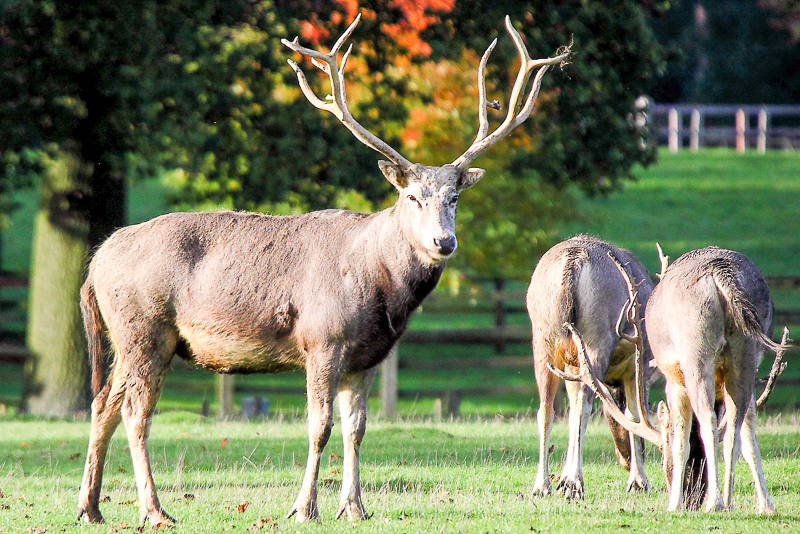7 CHINESE BOOKS RELATING TO «麈»
Discover the use of
麈 in the following bibliographical selection. Books relating to
麈 and brief extracts from same to provide context of its use in Chinese literature.
本书共六卷,包括:卷一史札;卷二尚论;卷三表徽;卷四文物;卷五东北史丛话;卷六杂俎。
各舞麈( ^ )尾以助談鋒,爭取優勝化。清談開啟辯證思維的風氣,成為士族日常生活與社交活動的主要方式。但因談者崇尚虛無,空談名理,發展到東晉時代,已成為脫離現實的口頭虛語。在朝的門閥士族,終日談玄說理而不屑一顧國計民生,更遑論收復中原失 ...
人,在習俗上,他們必執麈尾為道具,藉以助談興或顯示自己的身分,表示具有組織、主持和指揮清談的資格;〃因此,名士、清談和尾三者密不可分理學的才性之辨是帶有老莊色彩的清談,它是由兩漢經學發展至魏晉玄學的一中介環節,也是由漢末魏初的清議 ...
相关链接麈尾的作用为了显示潇洒脱俗的风度,士人们常常手执麈尾做的拂尘以助谈锋。麈属于鹿类,尾毛十分漂亮,于是“挥麈谈玄”、“奋掷麈尾”也成为风流名士的典型形象。这种充满诗意的清谈由此将玄学“究天人之际”的形而上学的追问转化成畅神娱心 ...
何平, Esphere Media(美国艾思传媒), 2015
雲雨:注見卷七〔一七 0 〕〈李遠傳〉「朝因稱客座淸談爲麈談。 0 「蓮花爲號玉爲腮」四句:《全唐詩》卷八〇二題作〈獻陳陶處士〉,《三間》本補。麈:即麈尾,古人用駝鹿尾所制成的拂塵之具。魏晉時名士淸談,常持麈尾,章:洪州舊稱豫章郡,州治南昌,今江西省南昌 ...
(一)简要介绍两晋壁画墓在结构上沿用东汉晚期的形制,壁画图像出现了最具有时代特征的墓主持麈尾像。麈尾是曹魏以来清谈玄学之士的随持之物,故当时又将清谈称作麈谈。在社会时尚风气的标榜之下,持麈尾的人物形象进入了墓葬中,成为晋墓壁画中 ...
作者系青年学人,著有《中国诗学精神》、《中国诗性文化》、《澄明美学》等。本书系文化随笔,既有理性的思考,又有诗性的感悟,对中国传统文化激浊扬清,文笔纵横开阖 ...
10 NEWS ITEMS WHICH INCLUDE THE TERM «麈»
Find out what the national and international press are talking about and how the term
麈 is used in the context of the following news items.
麈与清谈
手执麈尾念珠,跟着一个侍儿,飘飘拽拽的走来。”这麈尾即拂尘,古代以驼鹿(麈的俗称)尾做成,因此称拂尘为麈尾或麈。 在《世说新语》中,多有晋人挥麈清谈的记载。 «天津网, Sep 15»
文化融合:人类未来的大趋势
清谈者的姿容仪态也很讲究,最尊崇有范儿的是王戎的从弟王衍,据说他清谈的时候,“神情明秀,风姿详雅”,手里拿的麈尾以玉为柄,因皮肤白皙,手和麈尾的玉柄浑然 ... «搜狐, Aug 15»
經濟/改革證所稅切勿惹麈埃
近月台股持續低迷,市場人士紛紛把矛頭指向證所稅,總統參選人的政策立場格外受到矚目;國民黨立委羅明才更積極聯署提案凍結證所稅5年。證所稅是馬總統所堅持 ... «聯合新聞網, Aug 15»
麈爆傷者出院桃園醫院溫馨慶生
衛生福利部桃園醫院收治的八仙樂園塵爆傷者謝至中,恢復良好,今天出院,因逢生日,醫院為他舉辦一場小型慶生會,相當溫馨;日前出院的葉迦恩也回來,一起慶生。 «聯合新聞網, Jul 15»
歐盟嚴格測試超寧靜吸麈機
香港人是優質的消費者,選購家品時有自己一套,論到清潔家居必備的吸塵機,並非馬力大、吸力好就等於一切,在現實的層面上還要顧及運作時是否產生噪音及慳電。 «信報財經新聞, Jul 15»
柱柱姊退選是最佳選擇
不能承認中華民國存在」一句話,鬧得像八仙麈爆,把眾家立委同志,燒得雞飛狗跳,還得了集體焦慮症,掀起一股退黨和跳船的浪潮。其實大戲還在後頭,柱柱姊必須擦 ... «蘋果日報, Jul 15»
小野:躁鬱的粉麈
大約是下班時間,我從內湖的一幢科技大樓匆匆走出來,悶熱乾燥的熱風立刻包裏住我。這是八仙樂園粉塵爆炸後的第四天。 我像逃難似的躲進一輛不怎麼新的計程車 ... «蘋果日報, Jul 15»
陳嘉樺隔空為粉麈爆炸傷者打氣
提到台灣的粉麈爆炸, Ella 隔空為傷者打氣,又指現在探望傷者並沒有意義,應讓醫護人員悉心照料傷者,希望他們得到充足的休息。 她又希望能以好姊妹任家萱( ... «有線新聞, Jul 15»
扇子最早并不是扇风纳凉的
执麈清谈曾是魏晋名士的一种风度,南京出土南朝“竹林七贤”画像砖上,名士阮籍就手持一把麈尾;唐代阎立本绘《历代帝王图卷》中的吴大帝孙权也是手执麈尾。 «北京晨报, Jul 15»
台粉麈爆炸現場發現多個打火機
【now新聞台】台灣新北市八仙樂園造成一死、近500人傷的粉塵爆炸事故,目前仍有221人在醫院的加護病房留醫。當局繼續調查意外原因,據報現場找到十多個 ... «now 新聞, Jun 15»


